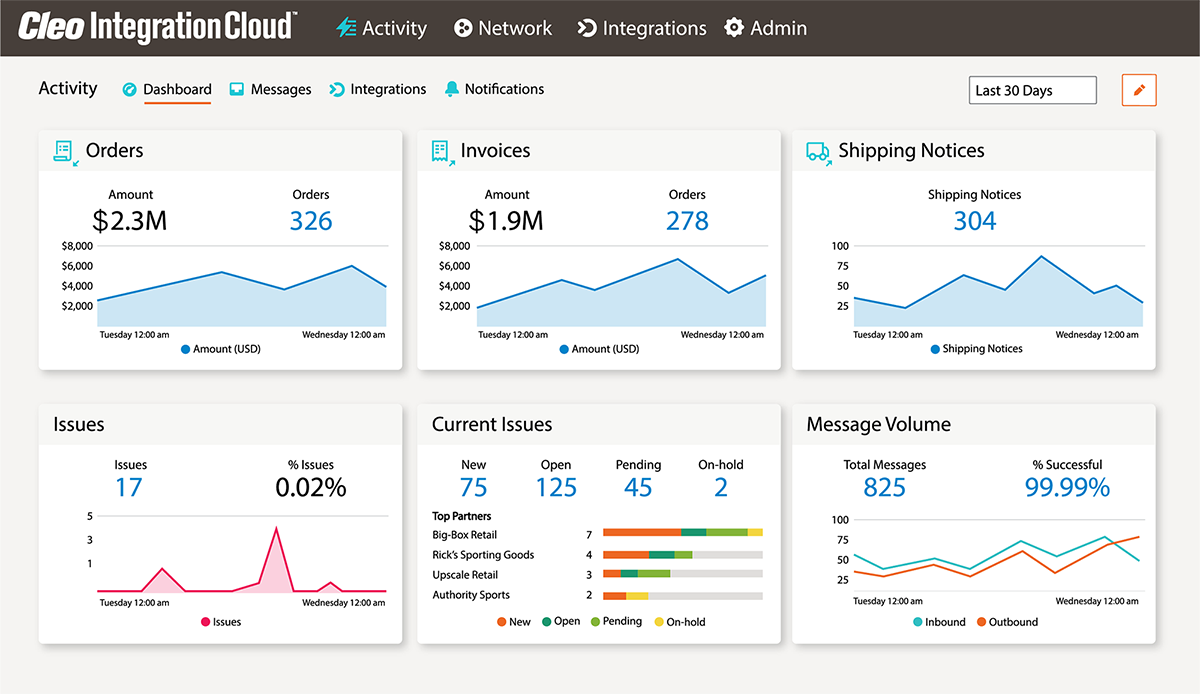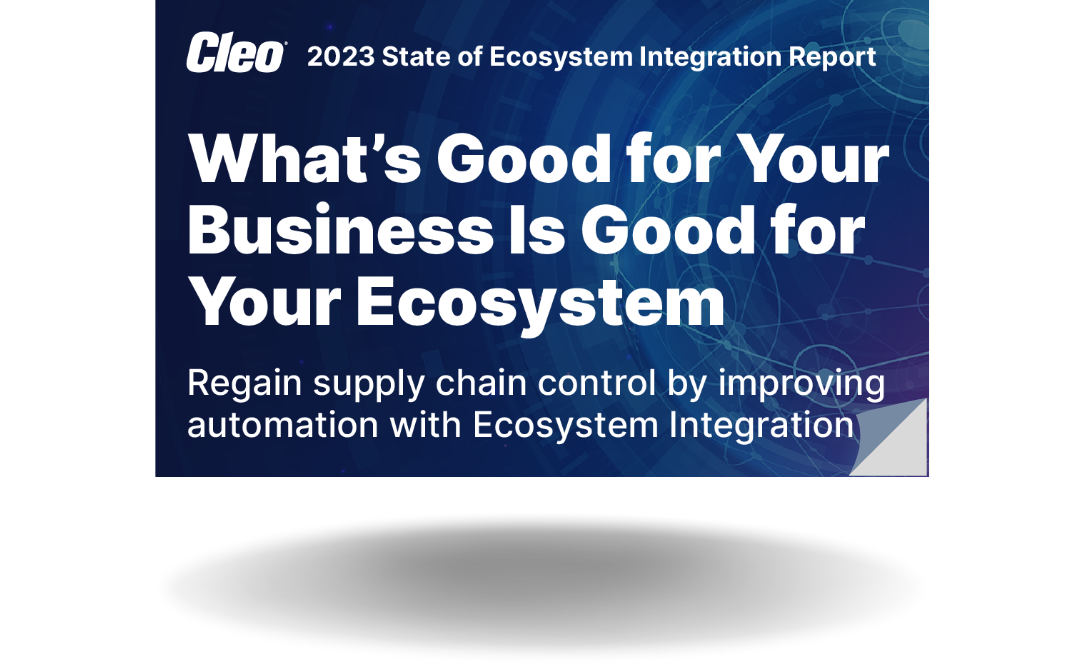Reducing Integration Visibility Gaps Drives Business Value

Today, let's take a look at the specifics of what an order-to-cash business process looks like and what the complexities involved are, to show how a lack of integration visibility anywhere within that process could prove costly. And note that, while yes, we are discussing order-to-cash, the core concept of this applies to any business or industry.
Table of Contents
RECEIVE
In an order-to-cash process, the initial step is to receive the order. You get an order somehow -- maybe it comes from a customer and possibly through an eCommerce portal, but obviously it could come in any number of ways.
An eCommerce integration as part of your broader platform is crucial here because otherwise you have to use manual processes to pull orders, update inventory and pricing, update shipment details once orders have been fulfilled, etc. Or you might have been using a point solution to integrate with your marketplaces and storefronts. In either case, you would have a separate system to check for visibility -- if you have any visibility at all.
That's why leveraging a core integration platform that can accommodate eCommerce-driven orders, as well as ones received in more "traditional" ways, provides huge advantages: automating and centralizing, while providing end-to-end visibility.
LOOKUP
The second step is that more than likely you'll have to do some sort of a lookup to figure out, did the order that you received actually make sense?
Is the customer allowed to order that SKU? There are a number of questions you must ask when receiving an order; maybe you don't have that item in stock in one of your warehouses, or perhaps you must go through another fulfillment routine simply to receive that order in the first place. Receiving an order is not as simple as it once was.
More often than not, you're also trying to pre-flight this data and clean it up before dumping it into your backend systems and ERPs to ensure you're not going to cause any downstream issues past the point of integration.
ERP/CRM
Once the information about the order is verified and validated, you can go ahead and put it into the ERP. So you enter it, whether your ERP's on-premise or in the cloud, it could be hosted, a web service, maybe a flat-file or a database.
Once it's entered into an ERP, a lot of the time you should also enter it into your CRM, which is often too a manual process today. Building that bridge between your ERP and CRM isn't easy.
Maybe your sales team is going in and entering things into your CRM to track, or someone goes in after the fact and updates from the ERP to the CRM to reflect that action so you can track who is ordering what. Or it could be a script you've written inside of your ERP. Tracking is incredibly important because how else can you figure out who is submitting orders, and to track it over its lifecycle.
PICK & PACK
Once the order is processed through your ERP, you must trigger your pick-and-pack processes. This is different for everyone. Some businesses do all their fulfillment through a third-party, or through a number of warehouses to which it can disseminate this order.
While it's wide-ranging, the fulfillment process exists for everyone and you need to make sure you support that. From there, you acknowledge the order back to the customer. Typically this is an EDI document, although it could be something else, whether it's XML or CSV. But you acknowledge back that you received the order and inform the buyer you're now going to fulfill it.
SHIP
Next, you're going to want to send the item(s). As you're fulfilling and packing, you need to send a request to your third-party logistics (3PL) provider, or perhaps you do in-house trucking or your own logistics. Typically, you'll identify the third-party logistics organizations that you could send a shipping request to, and allow them to schedule pick up, figure out delivery times, costs, etc. It's become quite an involved process, much more so than it was even just five years ago. Once you've settled on a 3PL, you have to send your ship notice. So you notify the customer who purchased something that they're going to get it.
The ship notice, believe it or not, is an area that actually results in a lot of penalties for organizations. If the ship notice isn't sent within a certain time following receipt of an order, then you're potentially liable for chargebacks. This a potentially huge pitfall and unfortunately eats directly into profits for many different organizations. It might seem straight forward, but timeliness really is the key to the entire process.
TRACK & TRACE
Once you've sent the ship notice, you're going to want to be getting updates from the carrier. Again, you have to enable that feedback continuously. It depends on the carrier, it depends on how you're doing your shipments, but you must get that feedback to figure out where the goods are and when they're supposed to arrive at the location to continually update and ultimately send a shipment status update to customers.
INVOICE
Next, of course, you need to send an invoice. The order has been fulfilled (or at least accepted), and now you want your money. So, you send the invoice to the customer, but that also involves a whole slew of patterns, and faltering here can become yet another losing area for many organizations, for a variety of reasons. Similar to the ship notice, a lot of times there is a contractual window with the customer that you must send the invoice within.
If you don't, then either you are not going to get paid at all, or you will be penalized on a scorecard, or dinged in the form of a chargeback. The invoice has to be done appropriately and done in direct alignment with your other processes.
FINANCE APPS
Lastly, you need to update your financial application(s). Whatever financial systems you might be using, you have to make sure that you are actually updating the order in that system so that the invoice is going to be transmitted somehow, probably via an ACH transfer. This notifies the finance application that it should expect those things so that it knows what to do with those transactions, and in case someone doesn't pay on time, you know to go track them down.
That's an order-to-cash process in a nutshell. It's very extensive, and depending on your environment and just how complex it is, maybe you can cut a few steps out, or perhaps might even have to add a few steps in there. But it's important to recognize how many moving parts there are to a single mission-critical end-to-end business process, and how easy it is to lose track of a piece of data, which can result in a costly mistake.
Each component is a discrete event which, synchronized with the others, comprises the entire business process. But of course there are anomalies you need to be prepared for. At times you may need to look into one step of the process with information from a different step. For instance, you may get a question from a customer seeking the latest shipment status update because they've been having trouble with their ERP recently. They know what the order number is, but have no idea what the ship notice details were.
Traditionally, this sort of "finding the needle in a haystack" search involves digging through logs, looking at emails, searching within multiple systems, and spending an inordinate amount of time coming up with the answer. But technology has caught up and now with the right integration platform, you can quickly search and retrieve all the invoice details and immediately see the associated shipment data, so your customer service reps can quickly reply to such a question, and any others like it, in real time.
When an enterprise has visibility gaps across a business process, such as with the order-to-cash example we just walked through, not only does it slow things down, but it also can cost enterprises a significant amount of money.

About Cleo

